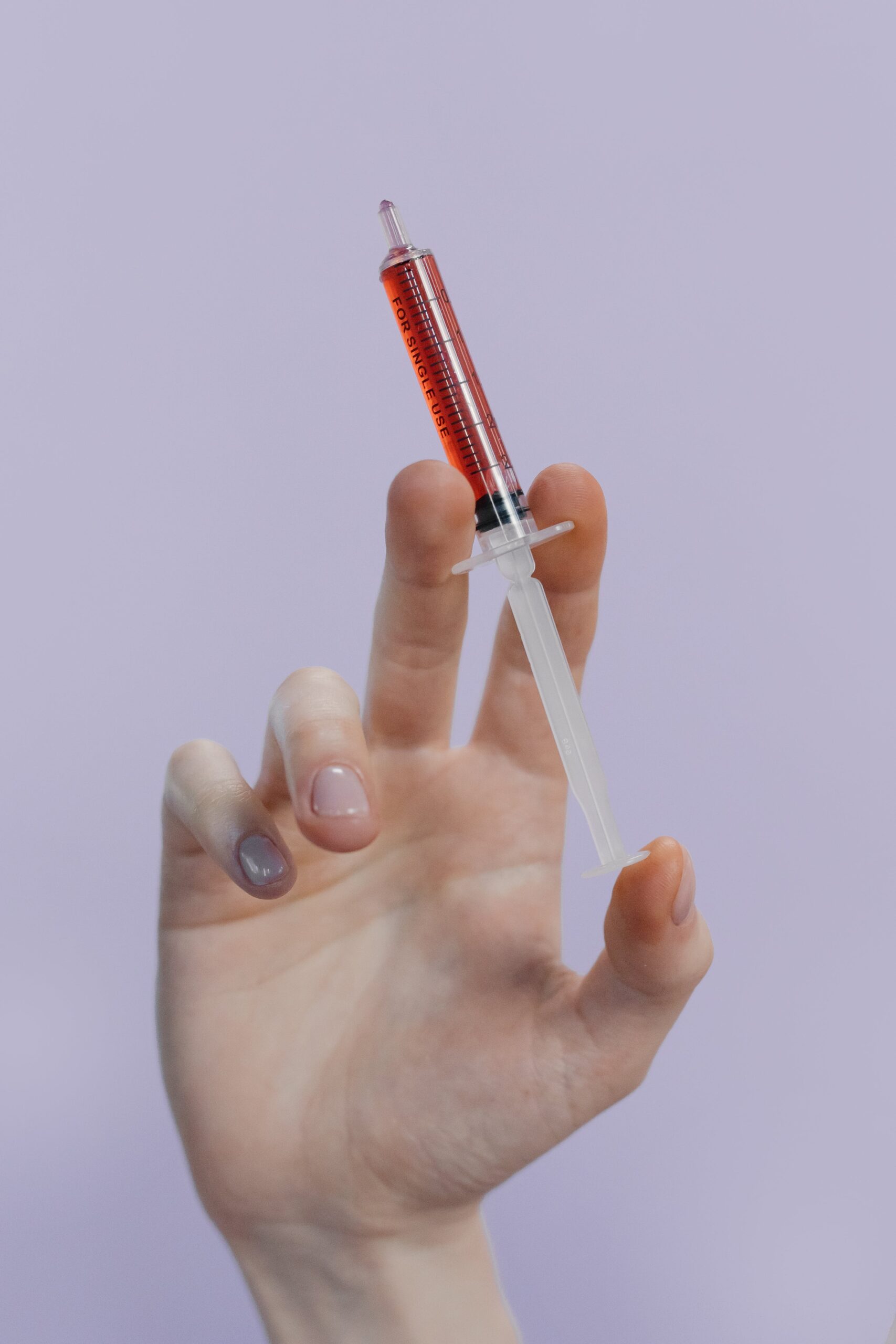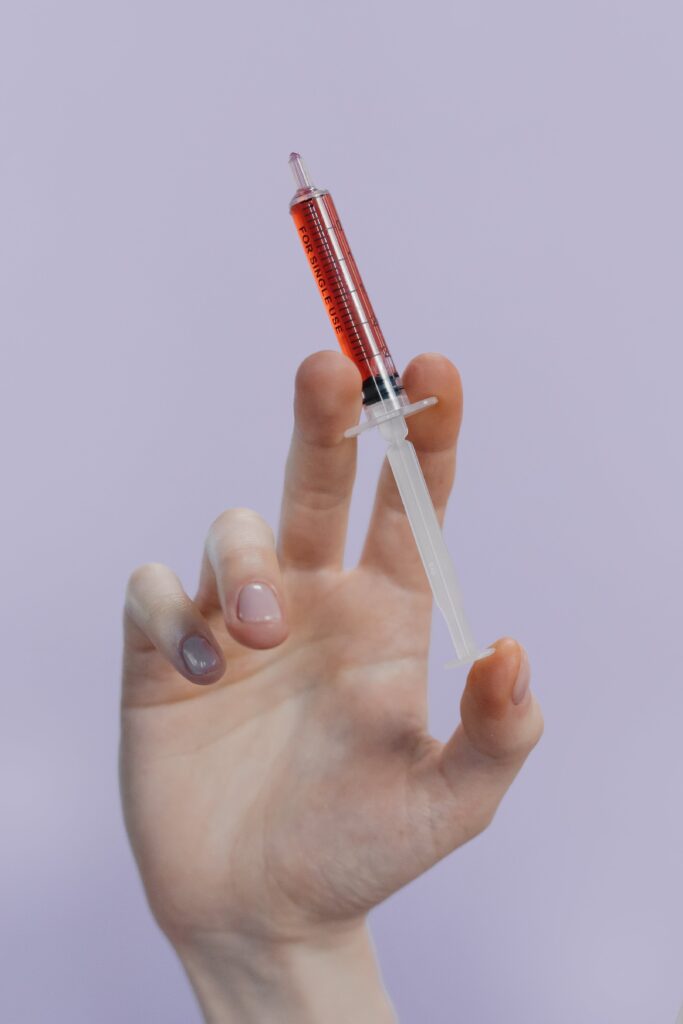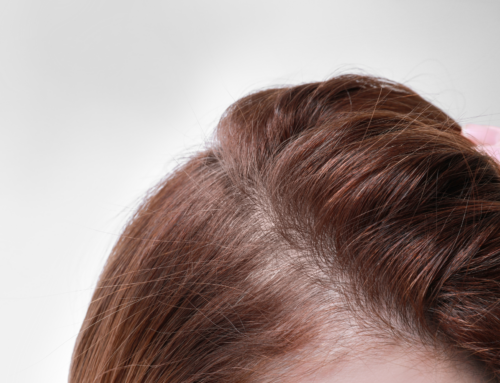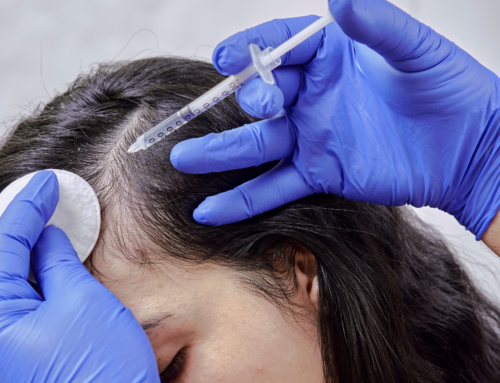PRP May Not Work for Hair Loss
There are many options when treating hair loss. One of the most popular options that is being used for hair loss is Platelet Rich Plasma, also known as PRP, which has been used in medicine for the last two decades.
Originally used for wound healing, doctors began incorporating it for the growth of thinning hair. PRP involves the use of concentrated blood plasma (the composition of blood). Our plasma contains approximately five times the number of platelets found in normal circulating blood. Apart from red blood cells and white blood cells, our blood also contains cells known as platelets. The function of platelets is to promote healing and aid in the clotting of blood at the site of a wound. Platelets contain growth factors that promote regeneration of the cells in the body.
Platelets aid in the clotting of blood which is the key to the body’s ability to heal wounds. The idea behind PRP therapy is that by increasing the platelet count in a wounded area, the body’s healing capacity in that area would be accelerated.
Hair follicles survive on the nutrition they get from our blood supply. If platelet-rich plasma is administered where the damaged hair follicles are located, it amplifies the body’s naturally occurring wound healing mechanism.
The benefits of platelets and the regeneration of tissue are widely known and accepted in medical literature, but their usage in recent medical conditions is currently being studied.
How PRP Works
MEET THE CLOTTERS
Platelets are the major clotting tool in our blood, but they are an interesting hybrid – not cells or molecules, but “cell fragments”. Platelets are to blood cells what wood chips are to a log … if the chips were extremely clever. Platelets have many interesting biological features, but they are best known for clotting — which is what gives them the healing mystique.
Countless biochemical factors regulate healing — it’s complex, to say the least. Platelets are part of the equation, and they play a major role in tissue regeneration and repair; specifically, they regulate fundamental mechanisms involved in the healing process including cellular migration, proliferation, and angiogenesis – but it’s more complicated than that.
PRP IS PERFORMED IN 3 STAGES:
PRP starts by withdrawing a patient’s blood, and “centrifuging” it, which is separating the red blood cells from the white blood cells – the plasma – so that only enriched cells remain. The platelet-rich plasma, which contains essential proteins and growth factors is injected into the scalp with medical needles.
PRP can be combined with microneedling, hair transplant surgery, or medications such as Propecia and Minoxidil.
Stage 1: First, approximately 60-100 ml of blood is collected from the vein, similar to a routine blood test. The blood is collected and placed in a special container, and the container is then placed in a centrifuge machine where the blood is spun for 15 minutes. When the centrifuge has stopped spinning, the blood components have been separated from the normal whole blood.
Stage 2: The concentration of platelets is applied to the scalp where hair loss is. To prepare the scalp, topical anesthesia is applied on the scalp, and a microneedling device – which pierces the skin and creates micro-wounds to the lower layer of the scalp, to induce healing – is used. The concentrated PRP is immediately injected with medical needles into different areas of the scalp. The procedure takes one to two hours.
Stage 3: Most activity can be resumed almost immediately, but the scalp needs protection from the sun and excessive irritation for at least 72 hours. Patients are not advised not to take any anti-inflammatory medication since it may interfere in the natural healing process of PRP. On average, most patients will require repeat PRP treatment after 6-12 months to maintain the hair growth effects.
According to published reports, PRP tends to improve hair caliber and hair growth for about four to six weeks, requiring repeated treatments once a month for three months. PRP can be very painful, and many people find it tiresome to get scalp injections every month. (1)
PRP Treatment Options
What we want in biology is the “just-right” amount of everything, which is rarely lots of extra anything. We cannot assume that a platelet-rich sauce of blood is natural, safe, or helpful simply because it came from our own body.
As a result, there are a multitude of PRP treatment combinations.
Some cosmetic surgeons offer PRP protocols to include: stem cells, including amniotic, adipose, and bone marrow, Acellular (extracellular), which is the by-product of the urinary bladder tissue of pigs that have been stripped of all of its cells is also used.
Other options include PRP with mesotherapy, cortisone, Propecia, minoxidil, and in conjunction with Follicular Unit Transplantation (FUT) or Follicular Unit Extraction (FUE).
LET’S CHECK THE RESEARCH
Androgenetic alopecia (AGA) and alopecia areata (AA) are common hair loss disorders affecting both men and women. PRP has been thought to be a potentially useful therapeutic tool for alopecias, without major adverse effects.
An international bibliography search, through five databases, was conducted to find articles regarding PRP’s action on hair loss. There simply hasn’t been enough clinical evidence to prove PRP as an effective hair loss treatment option. Due to the limited number of conducted trials, further studies are required to investigate its efficacy.
CHANGING PROTOCOLS
One of the reasons for the lack of clinical evidence is that the protocols have not had a consistent standard of application across the board.
The original PRP hair loss protocol called for 40+ medical injections. The protocol then changed to 14-16 injections on a deeper level. The theory is that deeper injections allowed for a greater spread of plasma, thus needing fewer painful injections. The method by which the needles are used may be overkill and go too deep into the dermal papilla.
According to hair loss expert, Dr. Amiva Prasad (Prasad Cosmetic Surgery), “I have done both protocols. Initially, I saw significant improvement over 9 months. Since being switched to the newer protocol, over 9 months, I have seen a regression.
Both protocols received PRP injections every 3 months. I can’t but help deduce that it was the numerous injections that stimulated the growth – not the PRP.” (2)
The major reason for the changes in protocol for PRP injections for hair regrowth is that it is an active area of research. No one yet knows the magic number of treatments, the optimal interval between injection sessions, or the best depth of injection.
IT’S COMPLICATED…
To be precise, no one knows if PRP is the best way to provide the biosignals that encourage hair follicles to become active, enlarge, and begin to grow visible hair. There are many efforts underway to find the best and most effective way to stimulate hair re-growth in androgenetic alopecia or other types of alopecia.
Not everyone is an ideal candidate to undergo PRP. Patients who have an active infection in the scalp, a history of a viral infection like shingles, diabetes, or any clotting disorder, or patients who are on blood-thinning medications like aspirin and immuno-suppressive drugs are not candidates for this procedure.
It is important to understand that PRP alone does not stop hair loss. It can help someone with slow progression to possibly thicken up their hair.
“PRP MAY HELP SLOW PROGRESSION, BUT IT DOES NOT STOP PATTERN HAIR LOSS.”
– Dr. George Taylor, Medical Director, Cellese Regenerative Therapeutics
“While PRP contains lots of cytokines and growth factors, it might be considered a “shotgun” approach. There is no way to control what is in PRP to select those bio-signals most favorable to restore hair growth. This puzzle is far from solved,” according to Dr. George Taylor of Cellese Regenerative Therapeutics.
Frequent PRP treatments can cause something called “shock loss,” which is a shock from scalp trauma and inflammation due to the injection – similar to what is experienced after surgery or hair transplants – caused by the surgical trauma.
PRP fans and purveyors will tell you there is good evidence that PRP works for hair loss, but they might be cherry-picking studies.
On the whole, the evidence is inconclusive. Although more research is needed, enough studies have now been done that the evidence reviews have started to come out. They all warn that most of the evidence is poor quality, and they are all basing their conclusions on just barely enough good data.
They emphasize that PRP methods are not standardized — there are many versions of PRP, all based on speculation, not data. (3, 4)
A Better Option
A better option for hair loss revolves around the power of microneedling. Microneedling has shown benefit in hair regrowth even when no topical products are used. This may be because the trauma of microneedling itself will release bio-signals from platelets and other cells. We are far from fully understanding how best to stimulate hair growth, but many companies are investing time and research dollars trying to unravel this mystery.
Large randomized, double-blind control trials have not been yet performed assessing the value of medical microneedling in promoting hair growth in androgenetic alopecia. Microneedling not only creates localized trauma, it produces thousands of microchannels that can be exploited to allow greatly enhanced penetration of topically applied substances.
These fall into two general categories: pharmaceuticals and growth factors. Topical growth factors may prove more efficacious since they address the physiologic bio-signaling that is in control of hair follicle function – a more natural and physiologic approach and a better option.
GROWTH FACTORS
Growth factors are proteins that regulate cell division and tissue proliferation. Each growth factor has a specific cell-surface receptor.
The adult human has more than two hundred types of cells, whose numbers total in the trillions. All of them, except red blood cells, are constantly interacting by “speaking” with, or “listening” to, growth factors and cytokines.
This highly complicated communication process is called “paracrine signaling.” It’s the binding of the growth factors to the receptor that initiates, or, in some cases, blocks cell division. Most growth factors regulate only certain types of cells and tissues.
Used medically for years to treat blood diseases and cancers, growth factors have a strong history for wound healing. We know that growth factors play a pivotal role in skin and now, hair rejuvenation.
A great deal of scientific work has been devoted to finding ways to stimulate hair follicles using plant-derived active ingredients in the laboratory. Specifically, when it comes to hair, growth factors have proven effective. When we target the correct areas with the appropriate growth factor, we can support growth.
For instance, when there’s a disruption in the skin, cells that migrate to help with healing must decide: “should I make epidermis, or should I make hair?” We use growth factors to help the cells make hair. Topical application of cytokines and growth factors enhances paracrine signaling.
Biosignals applied to the skin augment what the body is already doing…or not doing. The bio-signals that “turn on” hair follicles, topically applied, can induce hair regrowth in dormant follicles.
There’s More to the Story
There’s more to the hair loss story. Scientists long thought people with hair loss had a depletion of hair follicles and follicle stem cells, necessary to grow hair.
We now know bald people have the same number of follicle stem cells as those with hair. They’ve gone dormant. It’s the inability of stem cells in the scalp to develop into the type of cells that make hair follicles that may be an underlying cause of pattern baldness. Scientists know these follicle stem cells need bio-signals (biological signals) from within the skin to grow hair.
When researchers compared balding vs. non-balding scalps, they found that balding scalps produced finer, less pigmented hairs that were much less vascularized.
Yet, when they exposed balding scalp cultures to a supplemental blood supply, the growth rate of the balding scalp cultures increased by about 80%. In another study, biopsies of balding regions of the scalp were accompanied by vascular thrombosis, the formation of a blood clot inside a blood vessel that obstructs the flow of blood and nutrients to the hair follicle.
In the final stages of pattern baldness, the tissue surrounding the hair follicle gradually lost their capillaries until the skin appeared to be almost deprived of blood vessels.
Similarly, reduced scalp oxygenation was noted (Goldman et al. in 1996), whose group stated that there was vascular insufficiency in regions of the scalp that lose hair during male pattern baldness.
In 2010, Freund and Schwartz demonstrated that injections of botulinum toxin (botox) resulted in increased oxygen delivery to the frontal areas of the scalp, resulting in reduced hair loss and new hair growth among men with pattern baldness.
CHRONIC INFLAMMATION
Because of chronic inflammation and hormonal imbalances, our vessels and soft tissues may be slowly calcifying and becoming more fibrotic. Some people express calcification and fibrosis through hair thinning (scalp calcification), others express it through heart disease, and others might not express it at all.
Reversing scalp calcification and fibrosis by using energetic/ mechanical stimulation – through modulated acute injury, or both – is the best scientifically validated method.
The most promising and effective stimulation technique to date we have found is through microneedling.
WOUND HEALING & HAIR REGROWTH…
Microneedling was originally developed to rejuvenate skin and reduce the visibility of scars and abnormal pigmentation. The procedure uses an electrical oscillating device which creates very shallow perforations in the skin.
When we injure a tissue, our bodies generate an acute inflammatory response that allows the body to repair that injury. If an injury is too severe – like a deep cut – our bodies repair the wound imperfectly, and the results in scar tissue. However, if an injury is minor – like the acute inflammation generated from, say, microneedling – our bodies can control the healing process and achieve perfect wound healing. Microneedling not only creates localized trauma, it produces thousands of micro-channels that will allow for enhanced penetration of topical substances.
In hair restoration, acute, short-term trauma helps to: Reduce fibrosis and scarring
- Increase blood flow
- Enhance penetration of growth factors
The 2014 Microneedling and Hair Loss study by the International Journal of Trichology confirmed micro-wounding’s benefits on hair regrowth with Androgenetic Alopecia. Each participant cited hair improvement of +2 and +3 grades on a 7- 7-point scale in six months. (5,6)
Calcification and fibrosis reduce hair follicles’ blood flow and oxygen levels. This contributes to slow and steady thinning. Chronic inflammation – the kind that results in hair loss – is prolonged and often results in calcification and fibrosis.
Acute inflammation is different from chronic inflammation. Acute inflammation is temporary and often caused by injury, and it promotes angiogenesis – the formation of new blood vessels and capillary networks that provide oxygen and nutrients to our follicles. By re-establishing blood flow and oxygen, we can encourage hair thickening and even regrowth. (6)
The combination of growth factors and microneedling has shown great promise. In a non-clinical trial of 80 + people treated with plant-derived growth factors and cytokines, 90% of the individuals experienced a minimum of 40% increase in real hair growth. Among men and women, in a three-year study before and after pictures consistently demonstrate hair growth ranging from significant to dramatic among men and women. Many of the pictures show significant improvement after even two treatments.
The physiologic control of hair growth is extremely complex, and, much more so than skin healing and regeneration.
As we’ve stated before, hair loss is a symptom, not a diagnosis. Toxicity and free radicals, inflammation, and lack of circulation at the follicle base, are just a few of the causes of hair degeneration.
Add to that, medications, thyroid, stress, and hormonal issues, and you see that many things play a part in the cascade of biological triggers leading to hair loss. What is required is a system that addresses the whole problem, including Diet, Scalp Health, Gut Health, and Lifestyle.
We will cover these in more detail in the future. If you are interested in learning more about how you can regrow hair in a natural, non-invasive way, reach out to Cellustrious® Hair Rejuvenation at 941-909-7701.
REFERENCES:
- Naperville Hair Restoration Services
- Dr. Amiya Prasad, Prasad Cosmetic Surgery
- Dr George Taylor, Cellese Regenerative Therapeutics
- Paul Ingraham
- Microneedling & Hair Loss – Int’l Journal of Trichology
- Rob English, “Perfect Hair Health” Vol 2






